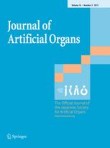|
Medicine RSS-Feeds by Alexandros G. Sfakianakis,Anapafseos 5 Agios Nikolaos 72100 Crete Greece,00302841026182,00306932607174,alsfakia@gmail.com
Πληροφορίες
Κυριακή 20 Δεκεμβρίου 2020
Calcium signaling: breast cancer’s approach to manipulation of cellular circuitry
What Are the Preferences of Patients With Rheumatoid Arthritis for Treatment Modification? A Scoping Review
|
Development of a Patient-Reported Outcome Measure for Non-Alcoholic Steatohepatitis (NASH-CHECK): Results of a Qualitative Study
|
Clinical and Economic Burden of Pediatric Mild-to-Moderate Atopic Dermatitis: A Population-Based Nested Case–Control Study in Sweden
|
Two-Year US Pharmacovigilance Report on Brodalumab
|
Identification of characteristics, risk factors, and predictors of recurrent LVAD thrombosis: conditions in HeartWare devices
|
Effects of Heat and Chemical Pretreatments of Banana Peels for Metal Removal in Single and Multimetal Systems
|
Clinical and radiological outcome after anterior cruciate ligament reconstruction using the T-lock Osteotrans resorbable tendon anchor: early experience and midterm follow-up
|
Surgical site infections after distal radius fracture surgery:
|
The faster the better? Time to first CT scan after admission in moderate-to-severe traumatic brain injury and its association with mortality
|
Influence of Biochar Particle Size and Concentration on Pb and As Availability in Contaminated Mining Soil and Phytoremediation Potential of Poplar Assessed in a Mesocosm Experiment
|
Αρχειοθήκη ιστολογίου
-
►
2023
(366)
- ► Φεβρουαρίου (184)
- ► Ιανουαρίου (182)
-
►
2022
(2814)
- ► Δεκεμβρίου (182)
- ► Σεπτεμβρίου (213)
- ► Φεβρουαρίου (264)
- ► Ιανουαρίου (262)
-
►
2021
(3815)
- ► Δεκεμβρίου (229)
- ► Σεπτεμβρίου (276)
- ► Φεβρουαρίου (64)
-
▼
2020
(5754)
-
▼
Δεκεμβρίου
(401)
-
▼
Δεκ 20
(25)
- Calcium signaling: breast cancer’s approach to man...
- What Are the Preferences of Patients With Rheumato...
- Development of a Patient-Reported Outcome Measure ...
- Clinical and Economic Burden of Pediatric Mild-to-...
- Two-Year US Pharmacovigilance Report on Brodalumab
- Identification of characteristics, risk factors, a...
- Effects of Heat and Chemical Pretreatments of Bana...
- Clinical and radiological outcome after anterior c...
- Surgical site infections after distal radius fract...
- The faster the better? Time to first CT scan after...
- Influence of Biochar Particle Size and Concentrati...
- Critical Ischemia
- How to Assess a Patient for HSCT
- The Ncoa7 locus regulates V-ATPase formation and f...
- Autophagy and the endolysosomal system in presynap...
- Anatomical basis of erector spinae plane block: a ...
- Topical Probiotics in Dermatological Therapy and S...
- Surgical management of symptomatic cavum septum pe...
- Possible tics diagnosed as stereotypies in patient...
- Role and function of Chondrostereum purpureum in b...
- Temporal effects of barbiturate coma on intracrani...
- Naltrexone’s Impact on Cancer Progression and Mort...
- Pharmacokinetics and Bioequivalence of Cefprozil f...
- Targeted Use of Prednisolone with Intravenous Immu...
- Walking the line: mechanisms underlying directiona...
-
▼
Δεκ 20
(25)
- ► Σεπτεμβρίου (365)
- ► Φεβρουαρίου (754)
- ► Ιανουαρίου (894)
-
▼
Δεκεμβρίου
(401)
-
►
2019
(146)
- ► Δεκεμβρίου (19)
- ► Σεπτεμβρίου (54)






